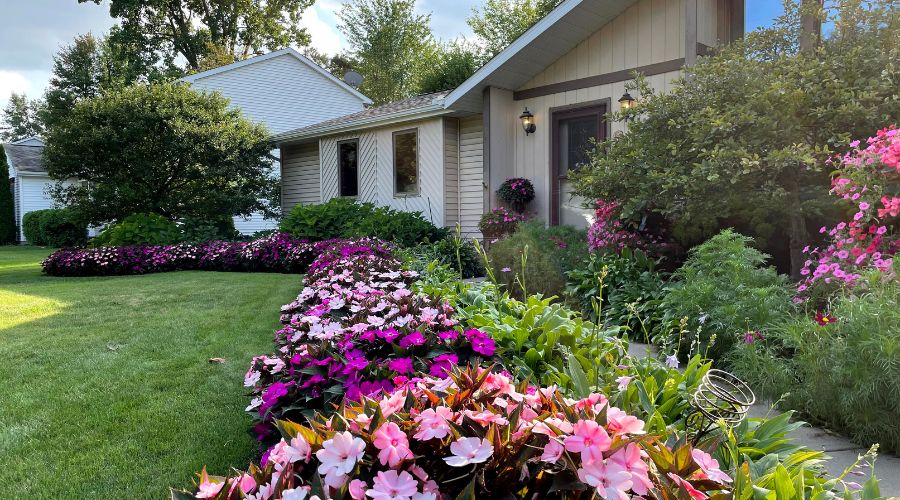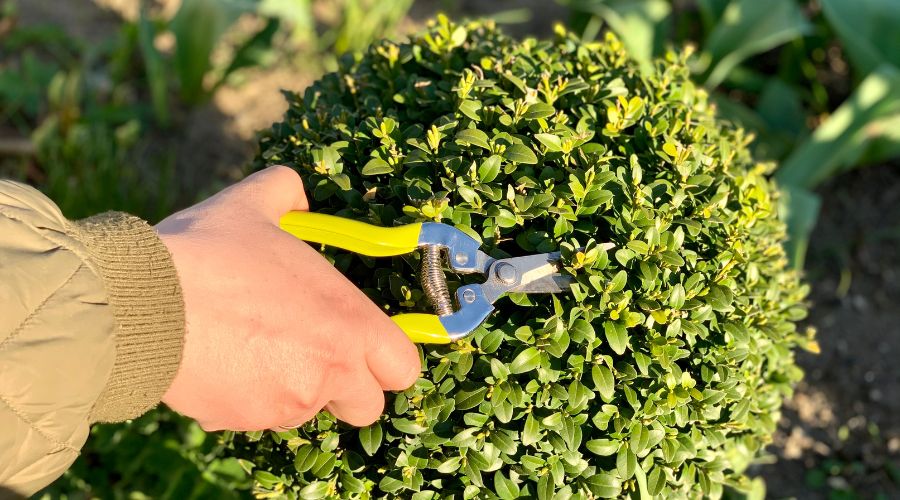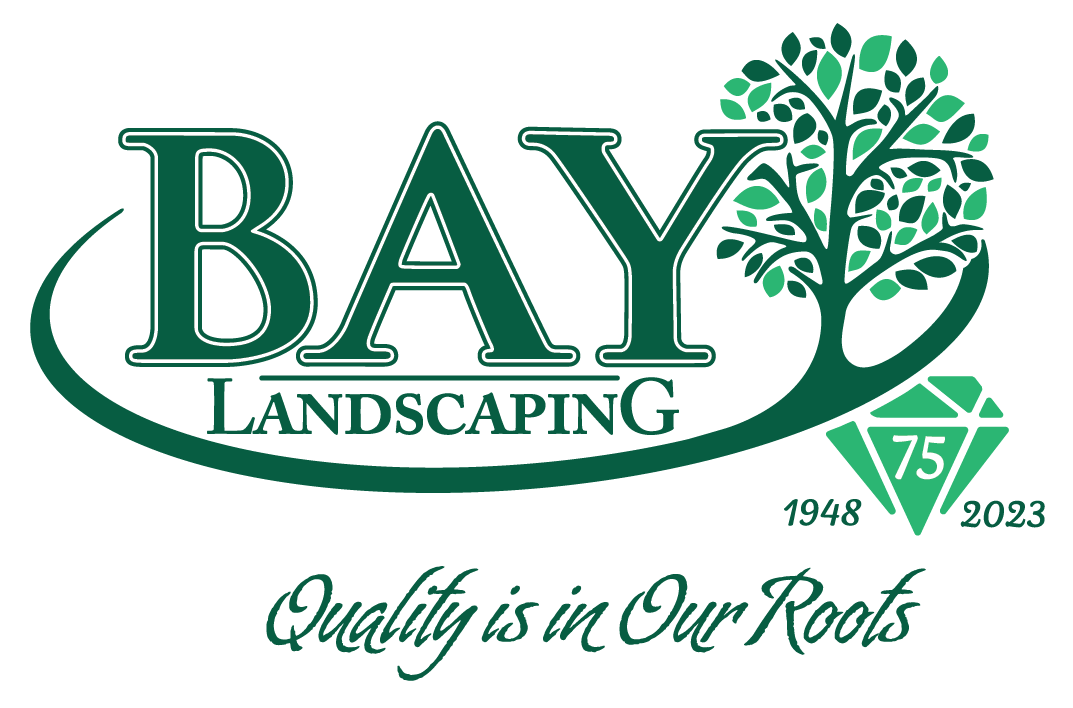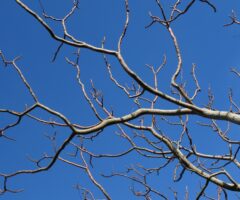If you’ve ever wondered, “What shape should my shrubs be?” you’re in the right place. Whether you dream of a formal garden with neatly trimmed hedges, a whimsical topiary display, or a relaxed, natural setting, the right shrub shape is key in bringing your vision to life. In this article, we’ll dig into the art of selecting the ideal shrub shapes to enhance your garden’s aesthetics and functionality.
Key Takeaways: Choosing the Right Shrub Shape
- Selecting the right shrub shapes, such as columnar, conical, round, or vase-shaped, can significantly enhance the aesthetic appeal and functionality of your garden.
- Popular choices for Mid-Michigan yards include a variety of flowering shrubs that offer both beauty and resilience, as well as evergreen shrubs for year-round color and privacy.
- Understanding the natural growth habits and maintenance requirements of different shrubs is key to successful landscaping.
Understanding Shrub Shapes and Their Impact on Landscaping
The shape of a shrub can dramatically influence your garden’s overall aesthetic and functionality. Each shape serves a unique purpose and can be used to create different effects in your landscape design. The key is to select a shape that offers a good fit with the look and feel you want and that works well in the place where it’s planted. For example, you wouldn’t want to put a fountain-shaped shrub (such as a forsythia) next to a walkway or a globe in a narrow space, but a pillar-shaped shrub would be great in both locations.
Let’s take a look at the common shrub shapes and their roles in a Mid-Michigan garden.

Columnar or Pillar-Shaped Shrubs
These tall, narrow shrubs are ideal for creating strong vertical lines in your landscape. They work well as accent pieces, framing doorways or pathways, and are especially useful in small gardens where space is at a premium. Common examples include the Italian Cypress, arborvitae, and Skyrocket Juniper, which add height without overwhelming the space.
Conical Shrubs
Conical shrubs, shaped like cones or pyramids, are excellent for creating focal points. They naturally draw the eye and can be used to highlight certain areas of your garden, such as entryways or garden benches. Shrubs like the Dwarf Alberta Spruce or American Holly fit this category beautifully.
Round or Globe Shrubs
These shrubs are fantastic for adding softness and continuity to your landscape. They provide a sense of calm and balance, making them ideal for planting in groups or rows. Round shrubs like Boxwood or Dwarf Korean Lilac are perfect for creating low hedges or borders.
Vase-Shaped or Fountain-Shaped Shrubs
Vase-shaped shrubs, with their wider tops and narrower bases, offer your garden an elegant and flowing element. They are excellent for adding a sense of movement and can be used to soften architectural lines. Shrubs like the Weigela or Forsythia fall into this category.
Ground-Hugging or Low-Growing Shrubs
In mid-Michigan gardens, several ground-hugging shrubs are commonly grown for their aesthetic and practical purposes. These shrubs serve as low-maintenance, space-filling elements that provide erosion control, suppress weeds, and offer visual interest. Examples include bearberry (Arctostaphylos uva-ursi) and New Jersey Tea (Ceanothus americanus).

Shrub Shapes to Avoid
In contrast to these natural shapes, shearing shrubs into unnatural forms like boxes or balls can harm their health and growth. Over-pruning or forcing a shrub into an unsuitable shape can lead to many problems, including reduced flowering, poor growth, and vulnerability to pests and diseases.
Unnatural shapes also require a high degree of maintenance to keep the desired form.
Choosing a shape that complements the shrub’s natural growth habit is critical for a healthy and stunning garden. By understanding these various shrub shapes and their impacts, you can make informed decisions that enhance your landscapes’ beauty and functionality while ensuring your plants’ health and longevity.
What About Topiary?
Topiary involves sculpting plants into various artistic forms, such as spirals, animals, or abstract designs. This requires patience, skill, and an understanding of the plant’s growth habits.
Engaging in topiary allows gardeners to express their creativity, making each garden unique. The key is to start with a clear vision and to regularly prune and train the shrub to maintain the desired shape. Over time, these living sculptures become focal points of the garden, providing a dynamic and artistic touch that changes with the seasons.
Topiary, while a beautiful art form, is best reserved for shrubs that can naturally sustain and thrive in these defined shapes, such as yew, privet, or boxwood. While these shapes can be visually striking, they’re not always the best choice for the health and beauty of your plants and require constant maintenance pruning.
Choosing the Best Shrub Shape for Your Mid-Michigan Landscape
This is where the expertise of an experienced landscape designer comes in handy. A designer will select shrubs based (in part) on their shape so they complement the landscape look and feel you want.
For the DIYer, consider your garden’s size and style, and your maintenance preferences. Select shrubs with growth habits and appearances that align with your landscape goals. For example, columnar or pillar-shaped shrubs are ideal for small spaces, providing vertical accents without overwhelming the area.
The tips below will help you choose the best options to fit your garden.
Shrubs for Formal and Orderly Landscapes
For polished and symmetrical aesthetic enthusiasts, a formal garden is a quintessential choice. In these landscapes, every element is meticulously planned, and shrubs play a crucial role in creating this harmony.
Many shrubs can work in a formal landscape although columnar, conical, and globe-shaped shrubs typically work best. Opt for shrubs with a symmetrical growth pattern which can be easily shaped into geometric forms to complement the structured design of your garden.
Boxwoods, for example, are a classic choice for crafting geometric shapes. These versatile shrubs can be shaped into neat hedges, borders, or even intricate parterres, lending your landscape a structured and manicured appearance. In contrast, fountain-shaped shrubs are a less fitting choice for formal gardens as they tend to have a looser and somewhat unkempt appearance.
Regular pruning is essential to maintain these shapes and to promote healthy growth. However, it’s important to balance this structured pruning with the shrub’s natural growth pattern to avoid plant stress. The aim is to complement your home’s architecture, enhancing its beauty with a sense of order and understated elegance.
Selected Shrubs for Formal Gardens
- Boxwood (Buxus)
- Yew (Taxus baccata)
- Holly (Ilex aquifolium)
- Topiary Juniper (Juniperus communis)
- Privet (Ligustrum)

Embracing Natural and Relaxed Landscapes
If you prefer a more laid-back and natural landscape design, choose shrubs that grow well with minimal intervention. Lilacs, viburnums, forsythia, and other flowering shrubs are perfect for this informal approach. These plants naturally maintain their shape and offer seasonal blooms, attracting wildlife and adding color and fragrance to the garden.
In a natural landscape, the beauty lies in the relaxed and organic appearance of the plants. This approach is both beautiful and beneficial for the local ecosystem, providing habitats and food sources for wildlife. Fountain-shaped bushes are an excellent choice while sheared and boxy shapes are generally avoided in these types of gardens.
Selected Shrubs for Informal Gardens
- Hydrangea (Hydrangea macrophylla)
- Lilac (Syringa vulgaris)
- Weigela (Weigela florida)
- Butterfly Bush (Buddleja davidii)
- Spirea (Spiraea)
- Forsythia (Forsythia x intermedia)
- Viburnum
Creating a Focal Point
Use shrubs with distinctive shapes or colorful foliage as focal points. For example, a vase-shaped shrub like a lilac can create an eye-catching display, especially when in bloom.
Selected Shrubs to Create a Focal Point
- Japanese Maple (Acer palmatum)
- Rhododendron (Rhododendron)
- Azalea (Rhododendron)
- Smoke Bush (Cotinus coggygria)
- Witch Hazel (Hamamelis)
Creating Privacy in Your Mid-Michigan Garden
Privacy can be achieved through fencing, tall hedges, or dense plantings. For privacy, consider shrubs with dense foliage and an upright growth habit. Evergreens like arborvitae or tall, dense deciduous shrubs can provide year-round seclusion.
Selected Shrubs for Creating Privacy
- Arborvitae (Thuja occidentalis)
- Boxwood (Buxus)
- Forsythia (Forsythia x intermedia)
- Privet (Ligustrum)
- North Privet (Ligustrum x ibolium)
- Yew (Taxus)
- Hawthorn (Crataegus)
- Beech (Fagus sylvatica)

Incorporating Evergreen Shrubs for Year-Round Appeal
Evergreen shrubs are indispensable in any landscape, offering color and structure throughout the seasons. They are particularly valuable in Mid-Michigan, where winters can be long, and the color is much appreciated.
Rhododendrons and hollies, with their looser shape and lush green foliage provide year-round interest in a relaxed landscape style. Boxwoods, yews, junipers, and arborvitae can be trimmed into more formal shapes, such as globes, columns, and hedges.
When selecting evergreens, it’s important to consider their immediate appearance, growth rate, and size at maturity. Choose evergreens whose growth pattern will mesh well with the overall aesthetic of your garden. This foresight will ensure that the shrubs fit well within your landscape for years to come, reducing the need for extensive pruning or removal.
Ground-Hugging vs. Upright Shrubs: Making the Right Choice
The growth habit of a shrub is a major factor in its landscaping role. Ground-hugging shrubs, such as creeping junipers or spreading yews, are excellent for covering the ground, stabilizing slopes, or creating low borders. Their sprawling nature can soften hard lines in the landscape and fill in spaces with lush greenery.
Upright shrubs, such as arborvitae or upright junipers, on the other hand, are ideal for adding height, creating privacy screens, or forming green walls. These taller varieties can be used to frame views, define garden rooms, or provide a backdrop for lower-growing plants.
When choosing between ground-hugging and upright shrubs, consider the scale of your space, the desired visual effect, and maintenance requirements to ensure a harmonious and sustainable landscape design.
Selected Ground-Hugging & Low-Growing Shrubs
- Creeping Juniper (Juniperus horizontalis)
- Bearberry (Arctostaphylos uva-ursi)
- Pachysandra (Pachysandra terminalis)
- Wintercreeper (Euonymus fortunei)
- Blue Rug Juniper (Juniperus horizontalis ‘Wiltonii’)
- Juniper (Juniperus)
- Cotoneaster (Cotoneaster horizontalis)
- Creeping Myrtle (Vinca minor)
- New Jersey Tea (Ceanothus americanus)
From Vision to Reality: Crafting Your Personal Garden Oasis
Whether your preference leans towards the elegance of formal gardens, the whimsy of topiary art, the tranquility of natural settings, or the year-round appeal of evergreens, the perfect shrub shape is out there waiting to transform your landscape into a living masterpiece.
The key to successful landscaping is not just about selecting the right plants but also about placing them thoughtfully to complement your home’s architecture and your personal style. With careful consideration and a bit of creativity, your garden can become a reflection of your unique aesthetic and a source of daily inspiration and joy.
At Bay Landscaping, we’re dedicated to helping you bring this vision to life. Our team of experts is always ready to provide personalized advice, helping you select the perfect shrubs from our extensive collection that will thrive in our local climate. Whether you’re starting from scratch or looking to revamp your existing garden, we’re here to support you every step of the way.
Visit us today in Essexville, MI, and let’s start the journey towards creating a breathtaking landscape you’ll cherish for years to come. For more information or to schedule a consultation, contact Bay Landscaping at 989-893-0000, and let’s turn your landscaping dreams into reality.






